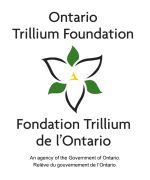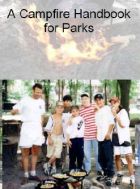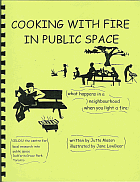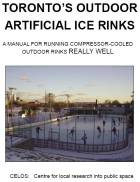

Pages in this Folder:

Related Folders:
See also Department Site Map
Support Provided by

Toronto Parks and Trees Foundation

This website has received support from celos.ca through the Trillium foundation.
Publications
Comments?
For the basics, see
- Website & Privacy Policies
- How To Get Involved
- The Role of the Park
Search options:
Department Site Map
Custodians:
< Chapter Ten | Stories List | Chapter Twelve >
The making and unmaking of Dufferin Grove Park.
A summer serial, continuing into the fall, September 15, 2011., Chapter Eleven
Jutta Mason
Recap: Dufferin Grove Park is doing things all wrong, says the current management of Parks, Forestry and Recreation (PFR). The way it is run leaves the city “vulnerable and open to major risk factors.” So a new supervisor was placed there. One of her tasks in the summer of 2011 was to dissect out the traditional activities from the many “programs that represent anomalies for PFR.”
If the “anomalies” are going to be eliminated, sanitized, or commercialized, it’s time to write down the story of how they grew up in the first place. Memory is short. I’m writing a record of how the trial-and-error approach shaped Dufferin Grove Park, up until it ran into PFR’s most recent “functional restructuring.” If the anomalies fade away, park users will still have a reference. When the time comes for a new wind to blow from neighbourhoods into City Hall, park users may want to pick up the thread and continue.
The last two chapters had stories about the two union locals that are most involved in working at Dufferin Grove: the Canadian Union of Public Employees (CUPE), Locals 79 and 416. This chapter and the next one are about money, and the role it has played at the park.
Near the beginning of this serial, in Chapter Two, I told the story of a $25,000 donation from Dufferin Mall to the park, in 1992. This donation may have been an effort by the mall manager, David Hall, to restore the good will of the people who lived near the mall. An earlier announcement by Hall that Marathon Real Estate would like to add some high-rise condominiums on the mall’s property had caused a neighbourhood outcry about traffic and congestion. The condos were cancelled, and Hall offered to raise $25,000 for the park. He worked out a fundraising scheme together with City staff. First the mall offered $3 child care for shoppers, at the mall’s play area. City recreation staff looked after people’s kids for two hours. But that must have been slow going. So Hall came up with a better idea: every car going into the mall parking lot would be asked for a donation of $2 toward the park playground. The money was collected by recreation staff, who were posted at the mall’s parking entrances. The Rec staff also handed out flyers for a “Teddy Bear’s Picnic,” involving some school kindergarten classes holding a trike parade which wound from the mall parking lot to the park.
Two weekends of the parking lot tariffs raised $25,000 for the playground fund, and also began the re-invention of the mall as a good corporate citizen and a booster of little children. The mall’s advertising firm mounted a bus shelter ad campaign called “Dufferin Mall – we are your community,” with giant photos of happy people in streets and parks. The Parks and Recreation Department got points at City Hall for public-private partnerships. A win-win, it seemed.
What was lacking, though, was a link between Parks and Recreation and park neighbours. When Park staff put up posters to summon park neighbours to a public meeting so they could decide what to do with the donation, the only people who showed up were city staff and the mall manager. Instead of a crowd of enthusiastic neighbours, David Hall got nobody. And the next day (he told me later) there was a letter from me, about the mall’s ad campaign. I had written to complain that his ad campaign was a distortion of reality.
So he called me up. If I was so keen on the community, he said, could I find out what the community wanted to do with the funds the mall had made available for the playground?
I was curious. The park seemed like a bit of an orphan. Many of my neighbours used it mainly as a shortcut to the mall. It had beautiful trees, a pleasant wooden playground, a baseball diamond, a bocci court, and an outdoor artificial ice rink. Despite these features, there had been an angry public meeting a year before, at which park neighbours had described a long list of problems with antisocial behaviours of various kinds. Many of the problems seemed to be located near the playground. So I spent two days calling neighbours and asking how they thought $25,000 could be spent, to make the park nicer. The neighbourhood to-do list that emerged (followed by a public meeting, described in Chapter Two) became our guide.
The next question was, how far would $25,000 go? A basketball court was the big item, and a sandpit for older children was the next. Nobody seemed to know the cost of a basketball court – maybe $15,000? The sandpit materials (sand, gravel, labour) were estimated at $4000. The artists I found to work with the kids would need another $5000 for the year, plus about $500 for materials. There was not enough money for a shed to store the supplies – but it turned out that the mall donation was a bit elastic. When I called the mall manager and told him we also needed a storage shed, and it would cost $1100, he issued us another cheque. We needed paint, and some plants for the children’s garden. The Park staff had a key to the padlock of the shed, and when we opened the door one morning, they had put in cans of paint and flats of flowers. We seemed to have good luck.
The following year was spent making gardens, campfires, pageants, little concerts. The artists joked about how they were working for $2 an hour. They were probably earning less. But the small swarm of kids who came the first and the second summer – aged 6 to 12, no adults in sight, full of ideas, trouble, and spunk – were so interesting that everybody kept on working anyway.
I was working for nothing, strongly motivated in equal parts by fascination (where was this going?) and fear of public embarrassment (what if it all just collapsed and the park went back to the status quo?) A city staff person suggested that we apply for a “Safe City” award from the Toronto Community Foundation. To our astonishment, we won, and a little group of us went to Metro Hall to get a cheque for $3000. It seemed like our luck was holding.
But the biggest piece of luck that day was not the cheque. It was a little note that was passed along to me from further down the row as we were listening to the award ceremony speaker. The note said “I like what you’re doing and I think I can help you.” It was signed “Pat MacKay.” I looked down the row and got a friendly smile and a nod from an older woman with white hair sitting at the other end. A moment later some of the park kids who had come to the ceremony with us got into a noisy argument as they were going up a down escalator nearby, and I had to run out. Afterwards there was only time to quickly shake hands with Pat and exchange phone numbers.
The “Safe City” cheque went fast. I took $2000 for myself, so that I wouldn’t be in a bad mood about my many unpaid hours in the park, and all the struggles that went with them. (It worked, I felt much better.) $100 went to Fernando the ice cream man and another $100 to Isabel the campfire cook. The rest was used for honoraria to artists for some after-school programs in the fall. But the writing was on the wall. We had ideas, but we couldn’t keep searching for people who would do wonderful park projects mostly for free.
I called Pat MacKay and invited her to the park. We showed her all around and she met the kids. She offered to become our mentor in fundraising. Until recently, she told us, she had been on the board of the Ontario Trillium Foundation. She thought we should apply to them, explain what we were doing, describe the park’s to-do list and the kids and the campfires, and see if they’d give us $10,000. She told us we should be brief and to the point, using “bullets.”
We filled out an application. Brevity was really hard – we wanted to tell the story! – but we tried. We enclosed some letters of recommendation, too, one from the City’s Recreation director, one from the head of the local office of Catholic Children’s Aid, and one from Pat MacKay.
A month later, we got a phone call from one of the Trillium staff. He wanted to come and talk to our board members, to learn a bit more about our work. I got a few people together and the Trillium guy, whose name was Bruce, came over for lunch. Pat MacKay came too. We told our story. Bruce listened and asked questions, and then at some point he seemed to get a bit impatient. Too many details! When I got up to make coffee, he said that, frankly, our story sounded “cute.” I almost dropped the coffeepot. It seemed to me (and to the others too, when we later compared notes) that he thought we were a bit of a gingham-apron-and-cookies operation. I said that we needed to get some funding to carry out our ideas, and he said that we had been doing so well just as volunteers, maybe funding would spoil it. I felt sick. We had obviously made a bad impression.
After that the atmosphere was fake-hearty and the lunch concluded quickly. We shook hands and Bruce left. The rest of us sat around the table with the taste of failure. Pat tried to comfort us, but without much success. “Cute”!! We felt humiliated.
That little word cut both ways, though. The next morning Pat made a call to one of her old Trillium Foundation board colleagues, and repeated “cute” to her. In the afternoon Bruce called and said he hadn’t intended to sound negative, and that our application was being considered. Then he dictated alternative wordings for almost every part of our application. The ideas were the same, but the language fit the fundraising mold.
The Trillium board liked the reworked application, and we got the $10,000. Work could begin on turning the rink around. Then we applied for a provincial grant, using the same new language. We got provincial “Child Nutrition” money that we could put together with the Trillium grant to let us build the first bake oven. An application to Canada Trust helped us get more gardens into the park. The municipal “Food Access” programs let us put a kitchen into the former rink clubhouse office space and slop room, and paid for more summer programs. A “G.H.Wood” grant (from the roller towel company, “Sanitation for the Nation”) let us do “heritage” campfire cooking with school classes in fall and spring. The Maytree Foundation topped up the bake oven fund and then followed up by buying us the rink clubhouse woodstove. All these applications were the sequel to Bruce’s painful coaching, combined with steadfast championing by Pat MacKay. (For some years we told the park kids that Pat was our “fairy godmother,” until she eventually got tired of the kids pointing her out to each other, and asked us to stop calling her that.)
The park bank account went up and down as the money came in and was spent. We kept every receipt and wrote long primitive lists of expenses, carefully adding up everything with a calculator and balancing it at the end of the year. The list of park helpers grew and grew. For the first two years we pasted all the names along a frieze about five feet up on the rink house walls, but then we gave up – no more space. With the grants, we were able to start older kids and youth on “odd jobs.” Hundreds of little slips of paper were stuffed into brown envelopes labeled by the months – slips listing the names, the tasks, and the amounts of the honoraria. As word got out, some of the kids’ parents approached us too – refugees who wanted to work but didn’t have permission, or parents on social assistance who found that their government cheque only covered the basics. Some of the adults who came to paint donated benches and make signs and sew clubhouse curtains told us that they used their honoraria to buy their kids little luxuries, like the fad toys of the day. They wanted their kids to be able to show off these toys to their friends, the parents said, like ordinary kids do.
Some of the park kids ought to have used their honoraria to buy better shoes, and a few did. But one day a boy came into the rink proudly showing off his new light blue eye colour. He had used his money to buy coloured contact lenses across the street at Wal-mart. Who would notice holes in your shoes if you could blink at them with eerie pale blue eyes?
We had got the hang of grant applications, but we really didn’t like twisting ourselves into a pretzel to conform to various funding fads of the day, particularly with government grants. We finally hit the wall with an application to the Ontario Ministry of the Solicitor General (“Sol-Gen”). They had a program called “Partners against Crime,” focused on collaborating with police on alternatives for youth who were in trouble. A friend who worked at Dufferin Mall Youth Services (DMYS) suggested that the park ought to “partner” with DMYS to apply for a grant. She and I labored over the application and ended up asking for $64,540 over a year. The grant proposal was based on creating part-time jobs for park youth who were in trouble with the police. DMYS would do counselling and help kids find work in mall stores. Over at the park, we would connect the same kids with a youth worker and set them up with closely supervised odd jobs.
Our application went in on Dec.15, 1997. But there was no acknowledgement, our calls weren’t returned, and finally we entirely gave up on it. Then on October 18 1998 we got a call from our sponsoring agency (Catholic Children’s Aid), saying that a grant of $22,000 had been approved for our proposal, subject to our agreement in three days’ time. On Oct.20, Sol-Gen staff faxed us a copy of the proposed agreement. It said the grant was “to assist Dufferin Mall youth services to provide culturally sensitive counseling and community service to youth.” My friend was no longer working at DMYS. Mystified, I called Sol-Gen and explained that the description bore no resemblance to our proposal. The grants officer seemed to be unaware of what was in the proposal, but she said the contract could not be changed. The new head of DMYS said that this way of proceeding was not unusual, and he suggested that we accept the money anyway and split it, to be used as best we could.
We (park friends) disagreed. I called the Sol-Gen to say we couldn’t be part of this unfamiliar project that we hadn’t asked for. So Sol-Gen staff offered the whole grant to DMYS and their director accepted it.
That would have been the end of the story, except that a lawyer friend of the park said we should close our books on the whole strange episode by asking for the original Sol-Gen “Partners against Crime” program guideline for our records. That was on a Friday. On Monday morning, I got a call from Sol-Gen staff, saying that they had decided to go with our original application, with the park in the lead. They said we could amend the proposal to fit the one-third funding. So we did that, and faxed our signed copy that afternoon. (Did they think we were going to come after them with a lawsuit?) (No chance!) – Meantime, we found out that DMYS had very few staff, and that both their director and their youth worker were full-time university students who would not be able to get started on the project for some months. So we took it over completely, and began with the odd jobs right away. DMYS felt that it was unfair, and maybe it was. But we were impatient to get going. 1998 had been a particularly mean summer, with one of the many troublesome park youths being taken away for attempted murder at a nearby restaurant. We wanted to lure the youth with odd jobs.
We worked on the project – with mixed success – over the next two years. But the deal left a very bad taste. We had begun to take in small amounts of income from the pay-what-you-can pizza days and the winter café. We wondered – could we get away from grant-writing and fund the park programs locally, mostly through park food? That’s the subject of Chapter 12, next week.
The dictionary page
A new vocabulary has grown up within the City bureaucracy to accompany the “functional model” used for the most recent restructuring of Parks, Forestry and Recreation (PFR).
(1) There are institutional ways of bending common words like “action,”
(2) there are words which have one meaning in the community letters to Councillor Bailao but a very different meaning when used by PFR management, like “food,”
(3) there are other words, like “compliance” and “authorization” which are almost never used in ordinary talk. But they can act as sticks to whack people with. There are so many of these words that although I used up the whole of Chapter Seven for the dictionary, I only got to the beginning of the “F” words. Since then I’ve been adding one dictionary page for every chapter. It will be interesting to see how long it takes to get through the alphabet.
Harassment: This is an important word in the Human Rights Code, but like so many words in the city bureaucracy, it spreads out in meaning and becomes available for an expanded number of circumstances. Seeking information too persistently can be labelled harassment. For example, if a City Councillor repeatedly asks for the city’s wading pool job description, and city staff don’t want to reveal it, they can suggest that the councillor is harassing city staff, which could carry a penalty. Harassment can escalate into Hate Mail: which is, for example, how a supervisor may describe the community letters she gets, if they criticize the City’s approach to Dufferin Grove Park.
Inventory: This is an important concept applied to park food. A box of farmers’ market lettuces for which the famer takes some bread in trade is a unit of inventory that needs tracking. The lettuces need to be counted and ticked off on a form, and the bread needs to be priced equivalently so that the original swap, or reciprocal gifting, can be quantified and recorded. The recreation manager says that the City auditor told him “Physical controls must be established to manage inventory - e.g. lockable cabinets for food stock.” So if a woman comes and asks for a half-loaf of bread, the park staff can no longer take it off the food cart and give it to her. Nor can they give her an apple from an unlocked fridge. Food no longer acts as a welcome, an embrace, a gift that flows easily back and forth among us. It’s a piece of locked-up inventory with a pre-recorded value, exclusively owned by the City. Any attempt to move such inventory back into the gift stream is labelled a fraud.
Investigation: this term joins easily to inventory. The City’s auditor says that one characteristic of a properly-run food operation is “provision for timely investigation of inventory and cash shortages.” Both inventory and preparedness to investigate missing inventory sit on a foundation of mistrust, on the expectation that people will steal bread and lettuce and unlocked apples. And they’ll steal the money the park needs to buy more groceries. The fact that good food was available unlocked, at Dufferin Grove, for fifteen years, is a mystery, from the City’s point of view.
The Money Story
Grants and donations used for Dufferin Grove Park, 1992 until 1998:
1992: Dufferin Mall: $25,000. 1993: Dufferin Mall: $6,100. 1994: Dufferin Mall: $9000; Toronto Community Foundation: $3000. 1995: City of Toronto grants: $5000; Ontario Trillium Foundation: $10,000; Ontario Social Development Council: $9000; Maytree Foundation: $2700; Dufferin Mall: $7000. 1996: Ontario Social Development Council: $2900; Canada Trust Friends of the Environment: $4525; City of Toronto Emergency grant: $6000; City of Toronto Food Access Program: $6925. 1997: City of Toronto General and Recreational grant: $6000; Maytree Foundation: $3500; Chris Sternberg Family Drop-In: $2000; Pat MacKay “unsung heroes” grant: $500; City of Toronto “Breaking the Cycle of Violence”: $8000. 1998: City of Toronto “Breaking the Cycle of Violence”: $3000; City of Toronto Recreation Grant: $6000, City of Toronto Drug Abuse Prevention grant: $2000; City of Toronto food cart prototype grant: $2450; G.H. Wood Foundation: $6000; Anonymous grant brokered by John Sewell: $10,000; Canada Trust Friends of the Environment grant: $3,600; Crankee Consort Theatre assistance grant: $8000; Ministry of the Solicitor General grant $22,000.
1999 to 2009: in Chapter Twelve, next week.
In Chapter Eight I gave some background on how CELOS came to administer the donated funds that go back into programs at Dufferin Grove Park. Since the mandate of CELOS is doing “practical and theoretical research into public commons,” it makes no sense for us to keep running park food operations once our research has shown they can work well. The City should take them over, but the question is: how can city policies be adapted to park food without stalling the food programs? That’s one of the issues that will need working out this fall.
As a first step, PFR has taken over the staffing of all the programs. That’s a good beginning, but it still needs more public input to make the park work well. CELOS has begun posting the weekly income (all food is PWYC donations) and expenditures. That way everyone can become knowledgeable about how much it costs to run the park programs.
Here is the accounting for the week ending Sept. 11:
Expenses: Groceries: $1320.83; Supplies: $0; Contracts: $396; Total: $1716.83
Income: Donations: $5362.42
Balance: $3645.59 (transferred to the City, $2100 cash plus $1545.59 by CELOS cheque)
Fall Story (2011) is published by the Centre for Local Research into Public Space (CELOS), celos.ca.
Illustrations by Jane LowBeer
< Chapter Ten | Stories List | Chapter Twelve >






 Printer friendly version
Printer friendly version